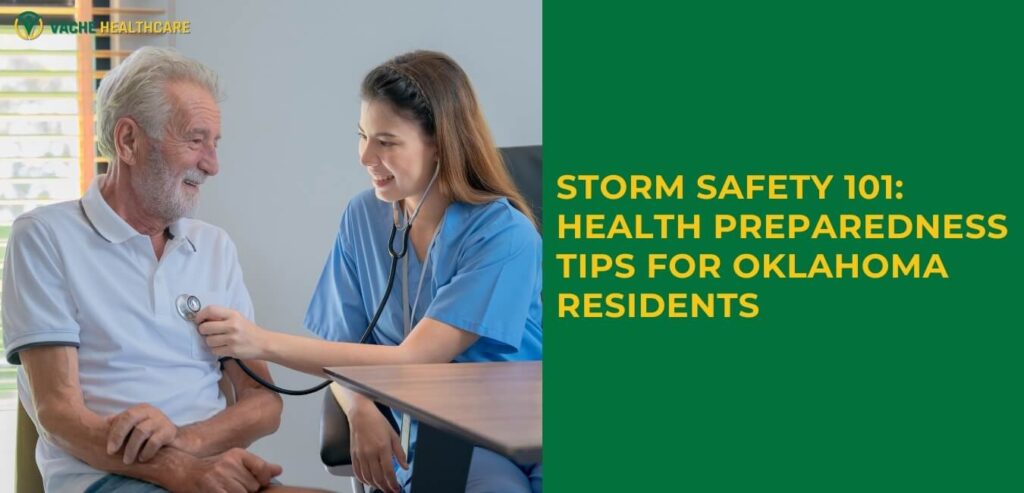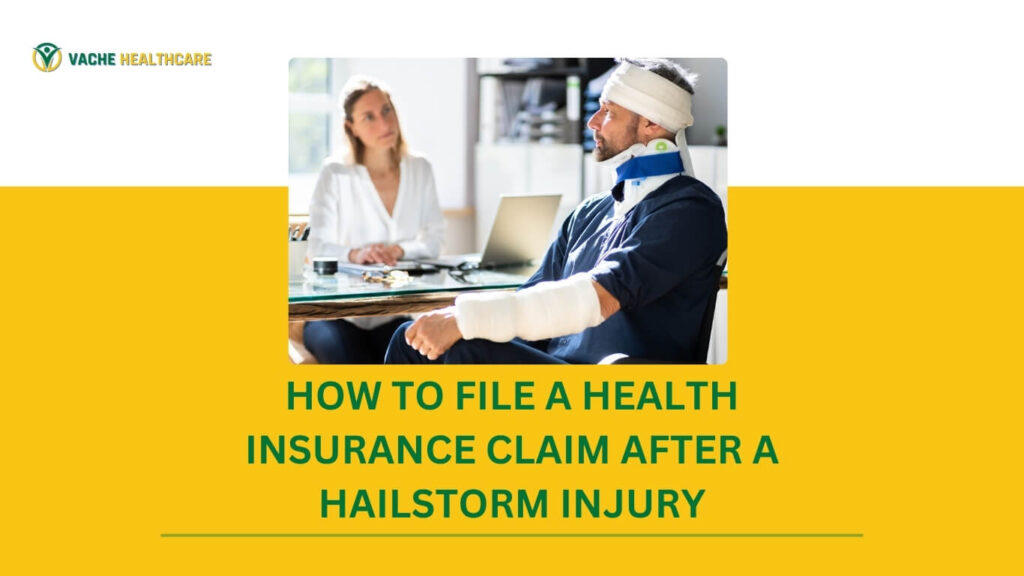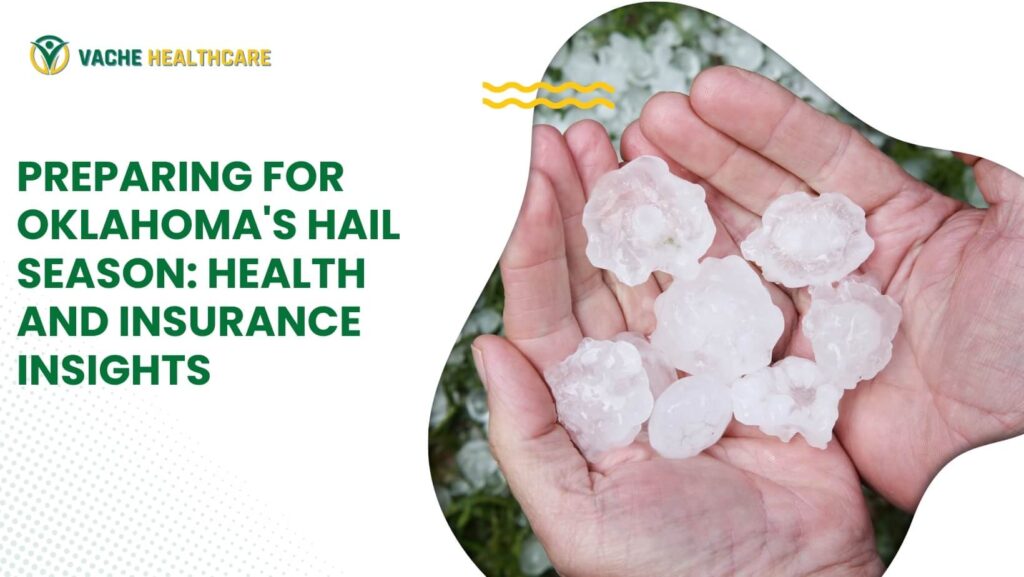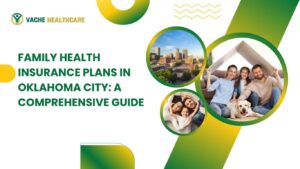Why Hail Season in Oklahoma Demands More Than Just Weather Alerts
When most people think about hailstorms in Oklahoma, they imagine cracked windshields, dented roofs, and damaged vehicles. While property damage is often the headline, the real threat lies in the impact hail can have on your health and well-being. The intensity and unpredictability of Oklahoma hailstorms have made them not just a weather concern but a serious public safety issue.
Every year, residents face more than just structural losses—they’re at risk of physical injuries, disrupted access to care, and heightened stress that can trigger long-term health issues.
That’s why hailstorm health preparedness should be a part of every Oklahoman’s seasonal planning. From understanding potential injuries to ensuring you have the right insurance coverage, taking proactive steps today can mean safer outcomes tomorrow.
Hail season demands more than listening for sirens. It requires a health-first approach—one that combines safety awareness, medical readiness, and the confidence that your coverage will protect you if the unexpected happens.
When Does Hail Season Hit Oklahoma City — And How Bad Can It Get?
Oklahoma City typically faces the brunt of hail season between April and June, though severe hailstorms can occur as early as March and as late as September. This period sees a higher frequency of strong thunderstorms, fueled by rapid shifts in temperature and moisture that create the perfect storm for hail formation.
Historically, Oklahoma ranks among the top U.S. states for hail-related events. Some storms produce hailstones larger than golf balls, capable of shattering windows, damaging homes, and causing serious bodily harm. The frequency and severity of these storms make them a recurring threat for families, businesses, and communities across the region.
In 2023 alone, dozens of reports documented hail damage across the Oklahoma City metro area, with some storms prompting flash flood warnings, tornado watches, and widespread power outages. With this kind of intensity, preparing for Oklahoma hailstorms is not optional—it’s essential.
Understanding the timing and threat level of hail season allows residents to plan for both physical safety and access to emergency services in the event of injury or disruption.
Top Health Risks Caused by Hailstorms
While hailstorms often pass quickly, their impact on personal health can be both immediate and long-lasting. Large hailstones falling at high speeds pose a serious risk to anyone caught outdoors, and even those indoors can face hazards from broken windows, collapsing structures, or flying debris.
Here are some of the most common health risks associated with severe hailstorms:
- Head and Traumatic Injuries: Falling hail can cause concussions, lacerations, or fractures, especially to the head and upper body.
- Cuts and Puncture Wounds: Broken glass, roof shingles, and storm-blown objects often lead to deep cuts and punctures.
- Sprains and Fractures: Slippery surfaces and panicked movement during storms often result in twisted ankles, broken bones, or falls.
- Dental and Eye Injuries: Flying debris or shattered glass can lead to cracked teeth, lost dental fillings, or eye trauma.
- Stress-Related Conditions: The emotional toll of natural disasters can trigger anxiety, insomnia, and in some cases, even critical illness events such as heart complications or panic attacks.
Proper injury prevention starts with recognizing these threats and knowing how to act quickly if you or a loved one is harmed during a storm.

Storm Safety 101: Health Preparedness Tips for Oklahoma Residents
When hail is in the forecast, most people rush to secure their vehicles or move patio furniture indoors. But real storm safety begins with preparing yourself and your family for potential health risks. Staying informed through local weather alerts is a great first step, but it’s just as important to plan for personal protection and medical readiness.
Before storms hit, make sure to designate a safe indoor space—preferably away from windows—where your household can gather. Keep a small emergency kit nearby with essentials like water, flashlights, a phone charger, and basic first aid supplies. Wearing proper footwear and long sleeves can help reduce injury risk if you need to move quickly through debris after the storm.
If someone in your household has chronic conditions or special medical needs, ensure their medications are stocked and accessible. Storms can delay access to pharmacies and hospitals, so even a few days of backup medication can make a big difference. Also, keep key phone numbers written down in case your mobile device loses power or service.
Taking these steps helps ensure your hailstorm health preparedness goes beyond sheltering in place—it positions you to respond calmly and effectively if things take a turn.
Are You Covered? How Health Insurance Helps During Hail Emergencies
During a hailstorm emergency, the focus often shifts to damaged homes and vehicles, but injuries and medical needs can quickly follow, especially when severe weather disrupts daily life. This is where having the right insurance coverage becomes essential, not just for property but for personal health and well-being.
Access to emergency medical services during or after a storm can be the difference between a minor injury and a life-altering complication. Whether it’s a visit to the ER for head trauma or treatment for a deep wound caused by flying debris, a reliable health plan ensures you receive care without the added stress of overwhelming out-of-pocket costs.
In many cases, accidents during hailstorms are sudden and unexpected. That’s why accidental health insurance plays an important role. From broken bones to stitches, accident coverage helps cover costs related to injuries that standard health plans may only partially reimburse. It provides peace of mind when the unexpected happens under dangerous weather conditions.
Post-storm recovery can also bring health risks that aren’t immediately visible. Stress, anxiety, and even heart-related complications may surface days or weeks after a traumatic storm event. In such cases, coverage for critical illness can offer financial support for diagnosis, treatment, and recovery, especially when combined with your primary plan.
Hailstorms can also result in more specific injuries, such as broken teeth or eye damage from shattered glass. If you have dental and vision coverage, you’re better positioned to handle the costs of emergency visits, replacements, or follow-up treatments. It’s a reminder that storm injuries go beyond cuts and bruises, and your health coverage should reflect that.
In unpredictable weather, insurance becomes more than a financial product—it’s your safety net. Ensuring your health plan protects you from all sides, including during storm-related events, is key to a more secure recovery.
The Growing Role of Telehealth During Natural Disasters
Severe hailstorms don’t just damage homes—they disrupt access to care. Roads can become impassable, clinics may temporarily close, and families might find themselves cut off from in-person medical services. In these moments, telehealth access becomes more than a convenience—it becomes a lifeline.
Telehealth allows Oklahoma residents to connect with licensed healthcare providers from the safety of their homes, even in the aftermath of a damaging storm. Whether it’s treating minor injuries, refilling prescriptions, or getting a mental health consultation after a stressful event, virtual visits fill a critical gap when face-to-face care isn’t feasible.
During previous natural disasters, telehealth services proved invaluable in keeping emergency rooms from becoming overwhelmed. They also gave families peace of mind by allowing them to speak with a professional quickly, without needing to travel through hazardous conditions. Many insurance plans today support telehealth services, recognizing their importance in emergency planning and hurricane health preparedness.
With just a smartphone or computer and an internet connection, residents can continue receiving care, even when the storm outside has made everything else feel uncertain.

How to File a Health Insurance Claim After a Hailstorm Injury
If you or a loved one is injured during a hailstorm, filing a health insurance claim promptly is essential. Begin by seeking medical attention and documenting the diagnosis and treatment. Most insurers require detailed records, so ask your provider for itemized receipts and medical reports at the time of your visit.
Once you’ve received care, contact your insurance provider or access your policy portal to begin the claims process. Upload all documentation, including medical bills, prescriptions, and any photos if relevant. If you have accident or supplemental coverage, check for additional forms that might be required to trigger those benefits.
Be sure to follow up with your provider to track the claim’s status and clarify any requests for further information. Acting quickly helps avoid delays, especially during times when emergency services are overwhelmed due to widespread storm impact. If you’re unsure about any part of the process, your provider’s support team can help walk you through it.
Trusted Oklahoma City Emergency Health Resources to Bookmark Now
In a hailstorm emergency, knowing where to turn for help can make a life-saving difference. Keep contact information for your nearest hospital, urgent care center, and local emergency management agency readily accessible. Some of the key resources in Oklahoma City include EMSA for ambulance services, the Oklahoma State Department of Health, and local Red Cross shelters during severe storm events.
Additionally, many clinics and hospitals now offer mobile-friendly patient portals, allowing you to message doctors, check lab results, or request medication refills without having to step outside. Bookmarking these digital resources in advance ensures you’re not scrambling when a crisis hits.
Why Oklahoma Residents Choose Coleen Vache for Storm-Ready Coverage
When the skies turn dangerous, Oklahomans want to feel secure, not just in their homes, but in their healthcare. That’s why many turn to Coleen Vache Healthcare for plans designed to withstand more than just everyday concerns. With options that include accident protection, access to telehealth during disasters, and coverage for both routine and emergency care, clients know they have a partner who understands the real risks of storm season.
The team at Coleen Vache Healthcare prioritizes responsiveness and guidance, especially when clients face the stress of navigating coverage after a storm. It’s not just about having a policy—it’s about having someone on your side when it matters most.
Final Checklist: Your Hailstorm Health & Insurance Readiness Plan
Before hail season peaks, take the time to review your health insurance documents and emergency plans. Make sure your policy includes access to urgent care and virtual visits, and check if your family is adequately covered in the event of an accident or storm-related illness.
Stock your home with medical basics, create a communication plan for your family, and store digital copies of insurance cards and provider contacts. Preparing now ensures you’ll be ready, not reactive, when the next Oklahoma hailstorm hits. Staying informed, covered, and calm is the best protection you can offer yourself and those around you.
Frequently Asked Questions
What injuries are common during hailstorms?
Head injuries, broken bones, deep cuts, and trauma to the eyes or mouth are among the most frequent. Hailstones, flying debris, and broken glass can cause serious harm during severe storms.
How can I protect myself during a hailstorm?
Seek shelter immediately in an enclosed area away from windows. Wearing sturdy shoes, long sleeves, and using protective headgear can also reduce injury risk if caught outside.
Does health insurance cover hail-related injuries?
Yes, most health insurance plans cover injuries caused by weather events, including hail. Depending on your policy, accident coverage and critical illness riders may also apply.
Are telehealth services available during hail emergencies?
Many insurance providers support telehealth access during disasters, allowing you to speak with a doctor virtually for non-life-threatening injuries, prescriptions, and follow-up care.
How does Coleen Vache support clients during hail season?
Coleen Vache Healthcare offers storm-conscious plans, fast support during emergencies, and coverage options that include accident protection and telehealth, helping clients feel secure when storms hit.








